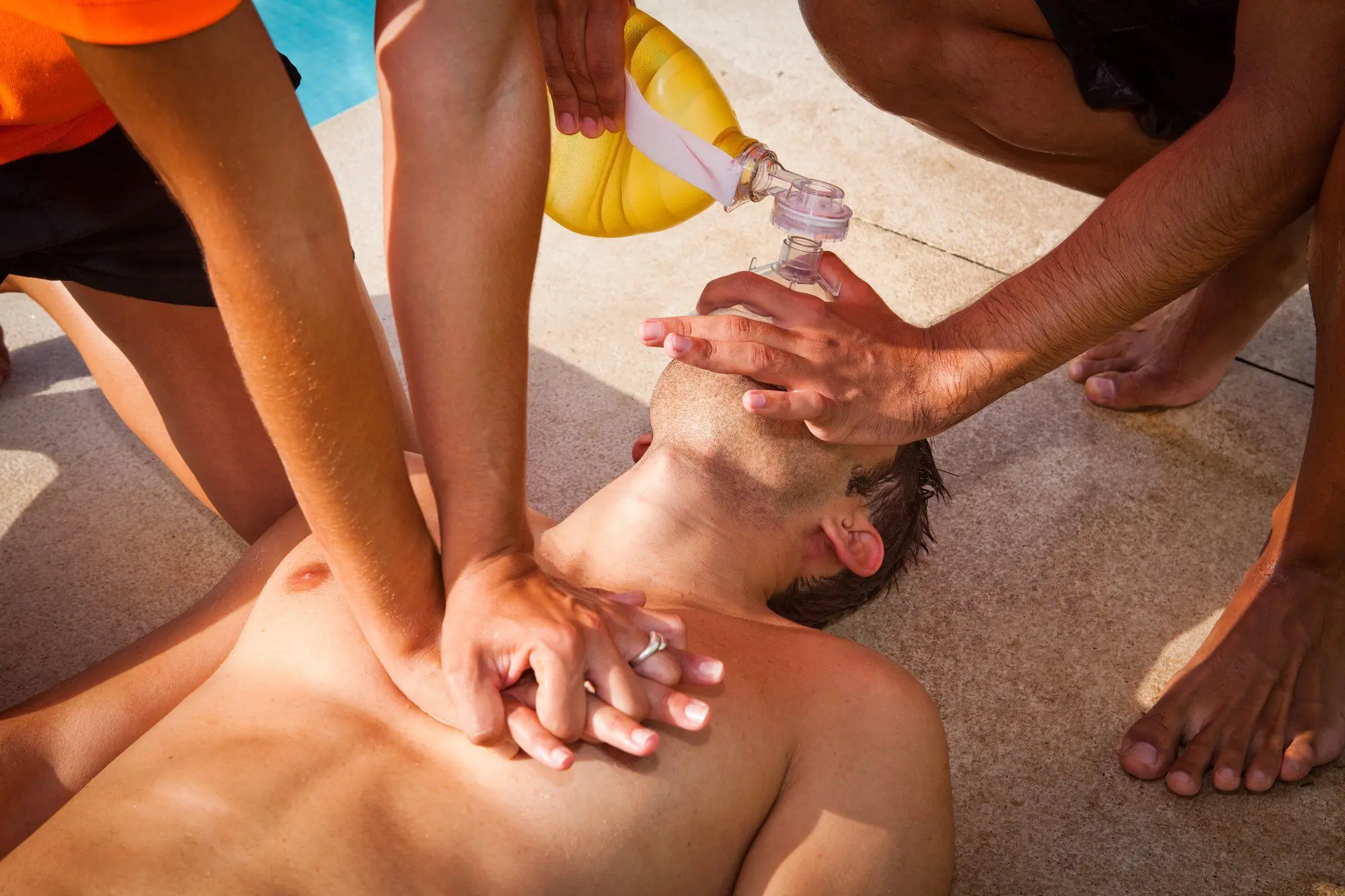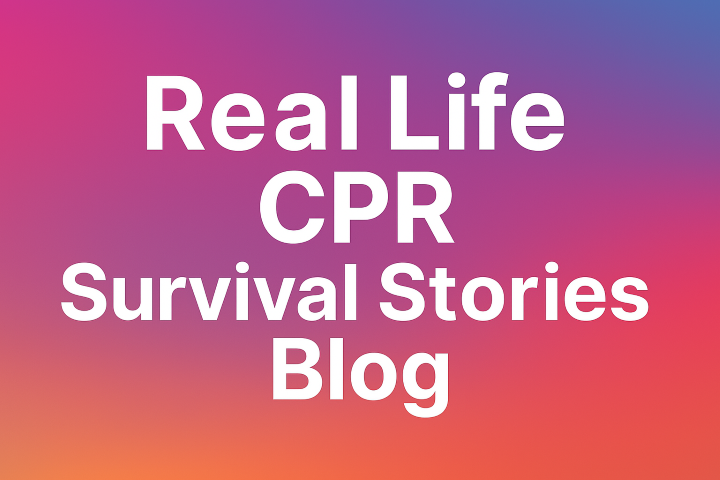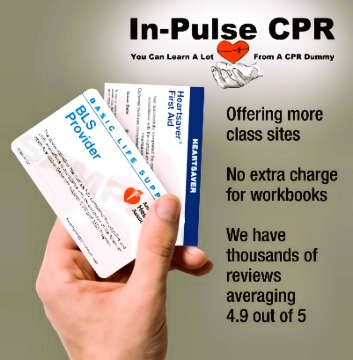CPR Classes for Anoka-Ramsey Community College and Anoka Tech Students & Faculty – Get AHA Certified Today
Anoka Ramsey Community College | Anoka Technical College | MN CPR Training Classes (more…)
Anoka Ramsey Community College | Anoka Technical College | MN CPR Training Classes (more…)
Are you a North Hennepin Community College (NHCC) student looking for CPR or BLS certification? Whether you’re pursuing a degree in nursing, health sciences, early childhood education, law enforcement, or simply want to be prepared in an emergency, In-Pulse CPR offers American Heart Association (AHA) certified CPR classes just minutes from campus in Brooklyn Park and throughout the Twin Cities.
With 13+ classroom locations across Minnesota and over 150,000 students trained, we’re one of the region’s most trusted CPR providers.
BLS for Healthcare Providers – Required for nursing, EMS, dental, and healthcare programs
Heartsaver CPR/AED – Ideal for childcare, teaching, and criminal justice students
Same-day AHA certification cards
Hands-on, instructor-led training with real-world emergency skills
Evening and weekend classes available
Whether you’re preparing for a clinical rotation, meeting program requirements, or seeking a resume booster, our flexible class options make certification easy and accessible for NHCC students.
Are you stationed at MacDill AFB and in need of CPR or BLS certification? Whether you’re an Airman, NCO, Senior NCO, Commissioned Officer, or DoD civilian, In-Pulse CPR offers American Heart Association (AHA) certified CPR classes just minutes from base—designed to meet your mission, schedule, and command readiness requirements.
Since 2009, we’ve trained over 150,000 students across Florida, including many from the U.S. Air Force, U.S. Central Command (CENTCOM), U.S. Special Operations Command (SOCOM), and other units right here at MacDill.
Whether you’re prepping for a PCS transfer, meeting AFSC requirements, or simply want to be ready in case of emergency, we offer 13+ Tampa Bay locations, with weekly classes including evenings and weekends.
We proudly serve:
🛡️ Our training is hands-on, practical, and always in compliance with American Heart Association standards—no shortcuts, no online-only gimmicks.

At MacDill Air Force Base and across the U.S. Air Force, personnel of all ranks may be required to complete CPR or BLS certification—from entry-level Airman Basic (AB), Airman (Amn), and Airman First Class (A1C) to more experienced enlisted ranks like Senior Airman (SrA), Staff Sergeant (SSgt), Technical Sergeant (TSgt), Master Sergeant (MSgt), Senior Master Sergeant (SMSgt), and Chief Master Sergeant (CMSgt). At the highest enlisted level is the Chief Master Sergeant of the Air Force (CMSAF), the senior advisor to the Air Force Chief of Staff. Commissioned officers, including Second Lieutenant (2d Lt), First Lieutenant (1st Lt), Captain (Capt), Major (Maj), Lieutenant Colonel (Lt Col), Colonel (Col), Brigadier General (Brig Gen), Major General (Maj Gen), Lieutenant General (Lt Gen), and General (Gen), also benefit from CPR training for leadership readiness, operational preparedness, and emergency response responsibilities.
ut.edu | The University of Tampa 

Are you a University of Tampa student looking for CPR or BLS certification? Whether you’re a nursing major, future healthcare professional, or just want to be prepared in an emergency, In-Pulse CPR offers AHA-certified classes near campus with flexible dates and convenient locations.
We’ve trained over 150,000 students in life-saving CPR since 2009, and we’re proud to serve the Tampa Bay area with 13+ classroom locations, including options just minutes from the University of Tampa.
American Heart Association Certified instructors
Hands-on training with real-world scenarios
Perfect for nursing students, education majors, coaches, and more
Classes offered weekly, including evenings and weekends
Official AHA certification card issued same day
Whether you need Basic Life Support (BLS) for a clinical program or CPR/AED for a job requirement, we’ve got a class for you.
If you’re looking to boost your cardiovascular health, the foods you eat play a critical role. Eating a heart-healthy diet can lower your risk of heart disease, improve blood pressure, reduce inflammation, and increase overall wellness. In this article, we explore the top 4 heart-healthy foods—blueberries, salmon, oatmeal, and spinach—and how they contribute to a strong, healthy heart.
Whether you’re trying to prevent heart disease or support your heart health naturally, adding these superfoods to your diet can make a big difference.
![]()
Blueberries are packed with antioxidants, fiber, and vitamins that promote cardiovascular health. Rich in anthocyanins, the compounds that give blueberries their deep blue color, these berries have been shown to reduce oxidative stress and improve blood vessel function.
Lower blood pressure
Reduce bad LDL cholesterol
Improve arterial stiffness
Support overall heart function
Keyword tip: Add blueberries to smoothies, oatmeal, or salads for a delicious heart-healthy boost.

Salmon is one of the best sources of omega-3 fatty acids, particularly EPA and DHA, which are essential for maintaining a healthy heart. These fatty acids help reduce inflammation, decrease triglyceride levels, and prevent plaque buildup in the arteries.
Supports healthy cholesterol levels
Reduces inflammation linked to heart disease
Lowers blood pressure
Helps prevent arrhythmias and other heart conditions
To get the best results, aim for two servings of fatty fish like salmon per week, as recommended by the American Heart Association.

Oatmeal is an excellent source of soluble fiber, specifically beta-glucan, which can lower LDL cholesterol (the “bad” cholesterol) and help regulate blood sugar levels. Starting your day with a bowl of oatmeal is one of the simplest ways to protect your heart naturally.
Reduces cholesterol absorption
Promotes digestive health
Helps manage weight and appetite
Stabilizes blood sugar, reducing cardiovascular risk
For extra heart health benefits, top your oatmeal with fresh blueberries or ground flaxseed.

Spinach is a powerhouse of vitamins, minerals, and plant-based nutrients. It’s especially high in potassium, folate, and magnesium, all of which are essential for maintaining healthy blood pressure and preventing cardiovascular disease.
High in potassium to reduce sodium’s effect on blood pressure
Contains nitrates, which may improve blood flow
Offers antioxidants to combat oxidative stress
Supports healthy arteries and circulation
Use spinach in salads, smoothies, omelets, or sautéed as a side to reap its full heart-protective benefits.
Incorporating heart-healthy foods like blueberries, salmon, oatmeal, and spinach into your daily routine is a smart step toward long-term wellness. Combine these with other heart-smart habits such as:
Limiting processed foods and trans fats
Reducing sodium intake
Staying physically active
Quitting smoking
Managing stress
These lifestyle changes, paired with the right nutrition, can significantly lower your risk of heart disease, stroke, and other cardiovascular conditions.
Heart disease remains the leading cause of death in the U.S., but diet is a powerful tool for prevention. Start small by adding just one of these heart-healthy foods—blueberries, salmon, oatmeal, or spinach—to your weekly menu. Over time, these changes can lead to lasting heart health.
For more health tips and CPR training that could save a life during a cardiac emergency, visit www.inpulsecpr.com.
heart healthy foods
top foods for heart health
how to prevent heart disease naturally
omega-3 for heart
best foods for cholesterol
oatmeal and heart health
blueberries and blood pressure
spinach and cardiovascular wellness
superfoods for heart health
Original author Pamula Arsena, Rewritten by Troy Bowman 7.2025
Trusted American Heart Association Training with In-Pulse CPR
Looking for CPR or BLS certification in Cookeville, Tennessee? In-Pulse CPR brings over 15 years of expertise to healthcare professionals, educators, childcare workers, and concerned citizens in your community. With over 150,000 students trained and multiple classrooms throughout Tennessee, our hands-on training courses follow American Heart Association (AHA) guidelines for the most reliable certification available.
Our Cookeville CPR classes are conveniently located and accessible to residents of:
Whether you’re a nurse, CNA, teacher, coach, construction worker, or new parent, we offer the certification you need to stay compliant and prepared in an emergency.
View Class Schedule & Register
Spaces fill quickly. Secure your spot today!
Have a group of 6 or more? We’ll come to you! In-Pulse CPR offers onsite CPR and BLS training at your workplace, school, church, or community center in the Cookeville area. Perfect for:
“Hands-down the best CPR class I’ve ever taken. Clear instruction and lots of hands-on practice. Highly recommend In-Pulse CPR!”
— Tina L., Registered Nurse, Cookeville TN
Don’t trust your CPR training to an online-only course. With In-Pulse CPR in Cookeville, you’ll receive the knowledge, confidence, and certification that truly prepares you to save a life.
CPR (Cardiopulmonary Resuscitation) is a lifesaving skill everyone should know—but even with training, it’s easy to make critical mistakes under pressure. Whether you’re a healthcare provider or a Good Samaritan, being aware of these common CPR errors can help you respond more effectively in an emergency. The American Heart Association (AHA) sets the gold standard for CPR training and guidelines. Let’s explore five frequent CPR mistakes and how to avoid them.
The Mistake: In the panic of a medical emergency, some responders forget to call for help right away.
Why It Matters: Emergency services need to be on their way as soon as possible. Every minute without professional medical care reduces survival chances.
How to Avoid It: Always call 911 (or direct someone to do so) before starting CPR—especially if you’re the only person present.
The Mistake: Hands placed too high, too low, or unevenly can reduce the effectiveness of compressions.
Why It Matters: Incorrect hand placement may not generate enough pressure to circulate blood or could cause injury.
How to Avoid It: Place the heel of one hand in the center of the chest, right between the nipples, and your other hand on top. Keep your elbows locked and shoulders directly above your hands.
The Mistake: Pushing too shallow or too slowly—or even too fast—can make compressions ineffective.
Why It Matters: Compressions need to be deep enough (at least 2 inches for adults) and at a rate of 100–120 compressions per minute to properly circulate blood.
How to Avoid It: Practice during training with feedback devices or follow the beat of the song “Stayin’ Alive” by the Bee Gees, which matches the correct tempo.
Bee Gees is old school but here are more current songs with the correct CPR beat…
Taylor Swift’s Songs that work for proper CPR and The Top Songs to Think of While Performing CPR
The Mistake: Leaning on the chest between compressions.
Why It Matters: The heart needs to refill with blood between compressions. Without full recoil, blood flow is reduced.
How to Avoid It: After each compression, let the chest fully rise before starting the next one. Keep your hands in position but remove all weight.
The Mistake: Either skipping breaths altogether when trained to provide them, or delivering breaths that are too forceful.
Why It Matters: In certain cases (like pediatric arrests or drowning), rescue breaths are crucial. Overly forceful breaths can cause air to enter the stomach instead of the lungs.
How to Avoid It: If you’re trained in full CPR (not just hands-only), give two breaths after every 30 compressions. Use a barrier device if available, and watch for chest rise to confirm effective ventilation.
The best way to avoid these mistakes? Take a certified CPR class. The American Heart Association’s guidelines are the recognized standard in CPR education, and high-quality training makes all the difference in a real-life emergency.
At In-Pulse CPR, we offer AHA-certified classes across several states, including Florida, Minnesota, Pennsylvania, and Tennessee.
👉 Sign up for a class today at www.inpulsecpr.com
Check this out….

If you’re in Oldsmar and need CPR certification, In-Pulse CPR offers convenient, in-person training right in your area. Our classes follow the latest guidelines from the American Heart Association (AHA) and are ideal for healthcare professionals, educators, fitness trainers, childcare workers, and the general public.
Our CPR classes in Oldsmar are hands-on, engaging, and led by experienced instructors who are committed to helping you gain the skills to respond confidently in an emergency. We offer training in:
We’re proud to serve surrounding communities including:
Don’t wait—classes in Oldsmar fill up quickly. Check out our Florida class calendar and reserve your spot today!
Are you looking for CPR certification classes in Chattanooga, Tennessee? In-Pulse CPR offers high-quality, American Heart Association (AHA) CPR training that meets the needs of healthcare professionals, teachers, coaches, childcare providers, and everyday individuals who want to be prepared in an emergency.
Our instructors bring years of experience to the classroom and deliver hands-on, in-person CPR, AED, and First Aid training. Whether you’re renewing your certification or taking a class for the first time, you’ll receive expert instruction in a supportive and engaging environment.
We proudly serve the Chattanooga area and surrounding communities with regularly scheduled CPR classes. Classes fill quickly, so don’t wait to register!
Florida Businesses: Stay OSHA-Compliant with On-Site CPR Training in Tampa, Orlando, and Fort Myers
Workplace emergencies can happen anytime, which is why OSHA requires many businesses to have employees trained in CPR and First Aid. In fast-growing regions like Tampa Bay, Orlando, and Fort Myers, Florida, employers are increasingly prioritizing certified CPR training to meet legal standards and protect their workforce. Whether you run a construction company, healthcare facility, manufacturing plant, or office-based business, ensuring your staff is prepared for a medical emergency is essential to maintaining a safe and compliant workplace.
At In-Pulse CPR, we offer American Heart Association-certified training programs specifically designed for corporate environments. Our instructors travel directly to your business location, providing convenient, high-quality CPR/AED and First Aid courses that meet OSHA and industry-specific compliance standards. With flexible scheduling and group pricing, we make it simple to train multiple employees at once—without disrupting your daily operations.
Serving the Tampa Bay area, Central Florida including Orlando / Clermont, and Southwest Florida’s Fort Myers region, In-Pulse CPR has helped hundreds of Florida businesses meet OSHA requirements while building a safety-focused culture. Let us bring professional CPR training to your team so you can stay compliant, prepared, and protected.
Class Options
Workplace Safety Starts with CPR: Get Certified in St. Cloud, Rochester, and the Twin Cities
When it comes to workplace safety, ensuring your team is trained in OSHA-compliant CPR and First Aid is not just a best practice—it’s a requirement in many industries. In the Twin Cities, including Minneapolis and surrounding areas like St. Cloud and Rochester, Minnesota, businesses are recognizing the importance of providing certified training to meet OSHA standards. From healthcare and manufacturing to education and public service, CPR certification can be a vital component of your company’s risk management and safety protocols.
At In-Pulse CPR, we specialize in on-site CPR training tailored for corporate clients throughout Minnesota. We bring American Heart Association-certified instructors directly to your business location, providing BLS, Heartsaver CPR/AED, and First Aid courses that meet OSHA and workplace requirements. Whether you have a small team or need large-group training across multiple sites, our flexible scheduling and professional instruction make compliance easy and convenient.
Serving the Minneapolis metro, St. Cloud, Rochester, and the broader Twin Cities area, In-Pulse CPR has worked with hundreds of Minnesota companies to improve workplace readiness and response in emergency situations. Investing in CPR certification for your staff not only satisfies regulatory requirements—it also builds a culture of safety and preparedness. Let us help your business stay compliant and confident.
Class Options
FLORIDA
Click the link to see the enacted version of FL House Bill 1607
This Florida House of Representatives bill, CS/HB 1607, focuses on enhancing cardiac emergency preparedness in public schools.
Here’s a breakdown of its key provisions:
In-Pulse CPR (www.inpulsecpr.com) is uniquely positioned to help Florida public schools fulfill the comprehensive requirements of CS/HB 1607, the new Cardiac Emergencies bill.
With decades of experience as a leading provider of CPR, First Aid, and AED training, In-Pulse CPR offers nationally recognized programs that align perfectly with the bill’s mandates. We can deliver the essential psychomotor skills-based instruction for both students in middle and high school, as well as the specialized training required for school staff in the proper use and maintenance of AEDs. Beyond just training, In-Pulse CPR can also assist schools in developing robust Urgent Life-Saving Emergency (PULSE) plans, ensuring they integrate evidence-based core elements and facilitate seamless coordination with local emergency service providers, as explicitly required by the new legislation. Our expertise in not only equipping individuals with life-saving skills but also helping organizations create effective emergency response protocols makes In-Pulse CPR an invaluable partner for Florida schools striving to meet these critical new safety standards by the July 1, 2027 deadline.
Case Study: Pinellas County Schools and In-Pulse CPR – A Decade of Life-Saving Partnership
Since 2017, Pinellas County Schools has forged a powerful and enduring partnership with In-Pulse CPR (www.inpulsecpr.com), a collaboration that has been instrumental in building a sustainable, in-house program for life-saving training. This long-standing relationship goes beyond simple instruction; it focuses on empowering a new generation of county staff to become certified instructors, creating a ripple effect of preparedness throughout the school district.
This strategic approach has allowed Pinellas County Schools to not only meet but exceed evolving safety standards. By working closely with In-Pulse CPR, they’ve been able to:
This enduring collaboration between Pinellas County Schools and In-Pulse CPR exemplifies a forward-thinking commitment to student and staff safety, ensuring that the entire school community is better equipped to handle critical emergencies.
School districts (health coordinators, safety officers, student services directors, etc.) in Florida seeking assistance with developing a Cardiac Emergency Response Plan (CERP) are encouraged to contact Christina Bassan at christina@inpulsecpr.com for more information and support.
Resources:
– Readiness Systems
-Florida Department of Education (FLDOE)
-Readiness and Emergency Management for Schools (REMS) Technical Assistance Center (SAMHSA)
-National Association of School Nurses (NASN)
–American Heart Association (AHA)
Keywords: BLS vs CPR, BLS certification meaning
In healthcare and emergency response environments, knowing the distinction between BLS vs CPR is critical—not only for compliance but also for saving lives. While the two certifications are often confused or used interchangeably, they sometimes serve different audiences and have different levels of complexity. In this article, we’ll explore the differences, explain who needs which certification, and highlight why American Heart Association (AHA) credentials remain the gold standard in BLS education. Lastly, we will explain why an online BLS certification is never advised.
CPR (Cardiopulmonary Resuscitation) is a foundational life-saving technique intended to keep blood and oxygen flowing to vital organs when someone experiences sudden cardiac arrest or stops breathing. CPR training teaches participants how to recognize cardiac emergencies, perform high-quality chest compressions, give rescue breaths, and use an automated external defibrillator (AED). That is it!
CPR courses are generally designed for laypeople and non-medical professionals. Individuals such as teachers, coaches, childcare providers, and concerned parents often pursue CPR certification to be prepared for emergencies in everyday settings. These courses emphasize basic response steps, typically with a focus on single-rescuer situations and minimal medical equipment.
Although CPR is critically important, it does not go into the advanced techniques or clinical protocols required in professional healthcare environments. BLS will take this knowledge several steps further.
Basic Life Support (BLS) is a more advanced and clinically relevant version of CPR, tailored for healthcare providers and emergency personnel. The BLS certification meaning goes beyond basic compressions and includes comprehensive instruction on airway management, two-rescuer coordination, and effective use of bag-valve-mask devices.
BLS certification is required for nurses, physicians, EMTs, dentists, and other professionals who work in settings where cardiac emergencies are a real possibility. This type of training emphasizes not just the actions of an individual responder, but the coordinated effort of a team. Trainees learn how to manage a code blue scenario, communicate effectively under pressure, and follow evidence-based algorithms that support better patient outcomes.
Unlike basic CPR training, BLS also introduces topics such as stroke recognition, opioid-related emergencies, and special resuscitation situations like those involving infants or advanced airways.
The main difference between BLS and CPR lies in the depth of training and the intended audience. CPR is appropriate for lay rescuers who may encounter cardiac emergencies in the home, school, or public environments. BLS, on the other hand, is specifically crafted for professionals who need to respond to life-threatening situations as part of their job duties.
Another key distinction is the focus on team-based response. While CPR courses may touch on AED use and adult/child CPR techniques, BLS training incorporates dynamic, scenario-based exercises that mirror what healthcare workers experience in clinical settings. It also includes instruction on ventilation techniques using professional-grade equipment—something not typically covered in standard CPR.
Fact: Anyone can take a BLS class. You do not need to be a healthcare professional.
When it comes to BLS education, the American Heart Association (AHA) sets the benchmark. Their curriculum is developed by leading experts in cardiology and emergency medicine, and it is continually updated to reflect the latest scientific research and resuscitation guidelines.
Employers across the medical field prefer or require AHA certification because of its consistency, rigor, and widespread recognition. Whether you’re a nursing student preparing for clinical rotations or a seasoned provider renewing your credentials, an AHA BLS certification demonstrates both competence and adherence to best practices.
The certification typically lasts two years, after which professionals must complete a renewal course to stay current. Online blended learning options are also available through AHA-approved training centers, combining flexibility with hands-on skills testing.
Taking a Basic Life Support (BLS) certification course in a classroom setting offers several advantages over online alternatives, particularly for healthcare professionals. One of the most significant benefits is the opportunity for hands-on practice with real equipment. In-person training allows participants to work directly with manikins, bag-valve masks, and AED trainers, helping to build muscle memory and refine critical techniques. This tactile experience is essential for mastering the physical skills required in high-pressure clinical situations.
Another key advantage is the immediate feedback provided by certified instructors. Unlike online modules, classroom instruction enables real-time correction and guidance, ensuring that learners perform compressions, ventilations, and team-based interventions correctly. Classroom settings also foster collaborative learning through realistic simulations and role-playing exercises, such as mock code blue scenarios. These experiences help participants develop effective communication strategies and understand the dynamics of team-based resuscitation. Additionally, the interactive nature of in-person courses—through discussion, Q&A, and scenario-based learning—enhances knowledge retention. Many healthcare institutions also prefer or require classroom-based BLS certification for credentialing, making it a more robust and widely accepted option for professionals working in high-acuity environments.
While online courses might seem convenient, the lack of personalized coaching and physical repetition makes them a risky substitute, especially when patient outcomes depend on razor-sharp, practiced responses.
And the biggest reason – Many employers will require an in-class BLS certification training and often will not accept an online substitute.
If you’re someone who wants to be prepared to act in a cardiac emergency in a non-medical setting—such as a school, home, or office—then CPR certification is the right fit. It offers the knowledge and confidence needed to act quickly and effectively during emergencies.
However, if you work in healthcare or are entering the medical field, BLS certification is essential. Not only is it required by most hospitals and clinics, but it also equips you with the skills needed to function effectively in high-stress, clinical environments where teamwork and precision are critical.
Understanding the difference between BLS vs CPR can help you choose the right training path and ensure you’re prepared to act in an emergency. CPR provides essential skills for the public, while BLS offers the professional-level expertise required in healthcare settings.
If your role involves direct patient care, clinical duties, or emergency response, AHA BLS certification is more than a credential—it’s a professional necessity and a vital component of patient safety.
How Pennsylvania Nurses Can Meet CEU and License Renewal Standards (2025)
| RN / LPN | CEUs Required | Child Abuse | Notes |
|---|---|---|---|
| Initial | 30 hours | 3 hours | Includes the 3‑hour child abuse course |
| Renewal | 30 hours | 2 hours | All must complete from approved providers |
| CRNP w/ DEA | 30 hours | +8-hour SUD course<br>+16 pharmacology +2 pain/addiction | Advanced pharmacology and opioid-related content mandatory |
To keep your nursing license active in Pennsylvania:
Sources:
Tennessee Nursing License Renewal: CEU and Continued Competency Requirements
How Tennessee Nurses Can Meet CEU and License Renewal Standards (2025)
In Tennessee, nurses are expected to engage in continued learning throughout their careers to ensure safe, competent, and up-to-date patient care. While Tennessee does not mandate a fixed number of CEU hours, it does enforce evidence of continued competence through a variety of professional development methods.
| License Type | CE Requirement | Notes |
|---|---|---|
| RN & LPN | No specific CEU hour mandate | Must provide proof of continued competence |
| APRN | National certification + 5 contact hours in pharmacology if prescribing | Certification must be maintained through recognized boards (e.g., ANCC, AANP) |
Tennessee nurses must demonstrate continued competence, which can be met through one of the following pathways:
Note: While specific CEU hours are not mandated, choosing board-approved CE activities is strongly recommended to document compliance.
In addition to meeting the RN requirements:
Does a BLS CPR class qualify for CEU or CME credits?
It depends on your profession and the accrediting organization. In general, Basic Life Support (BLS) CPR classes can qualify for CEU or CME credits, especially if they’re taken through an American Heart Association (AHA)–approved provider.
For example:
To be sure, it’s best to check with your licensing board or accrediting body. And if you took the course online, you may be able to claim your credits through the AHA’s eLearning portal once you’ve completed all course components.

This will close in 20 seconds